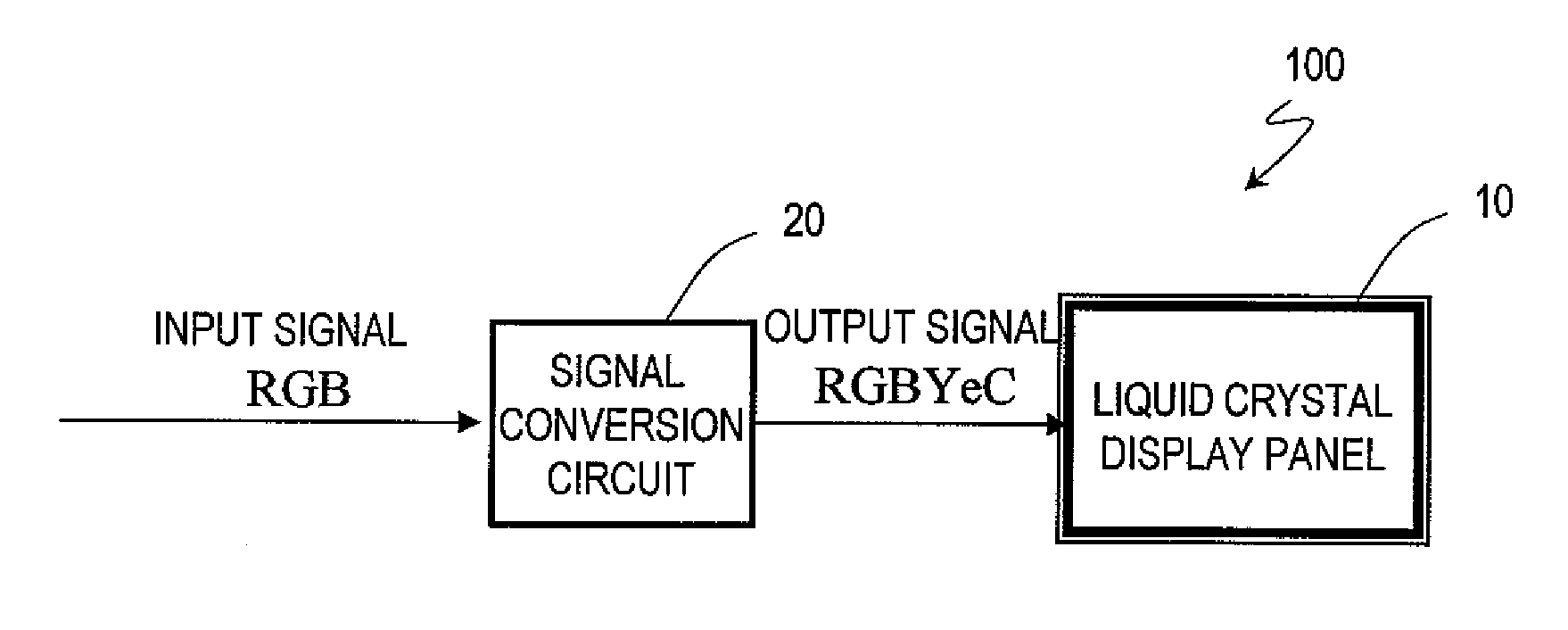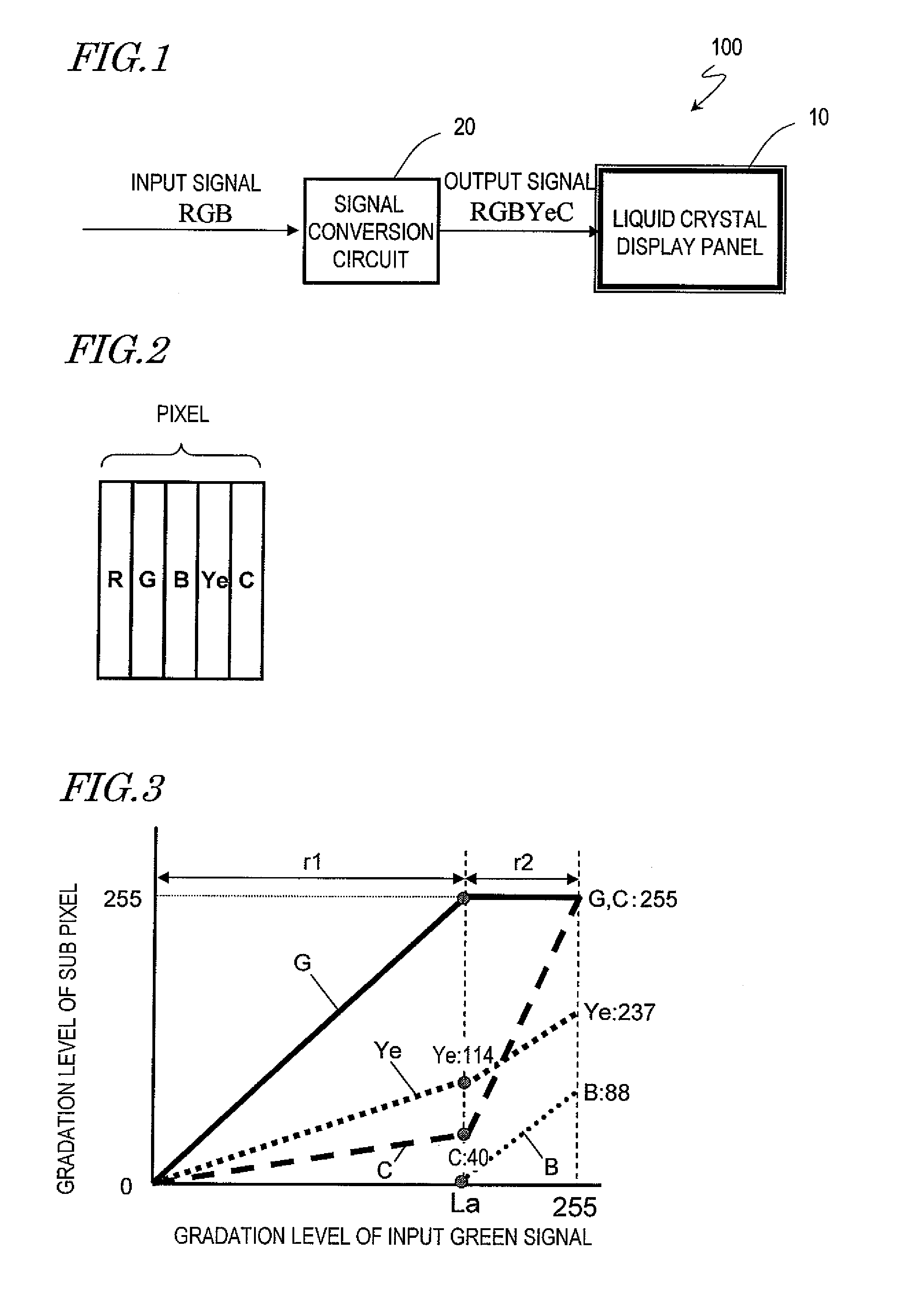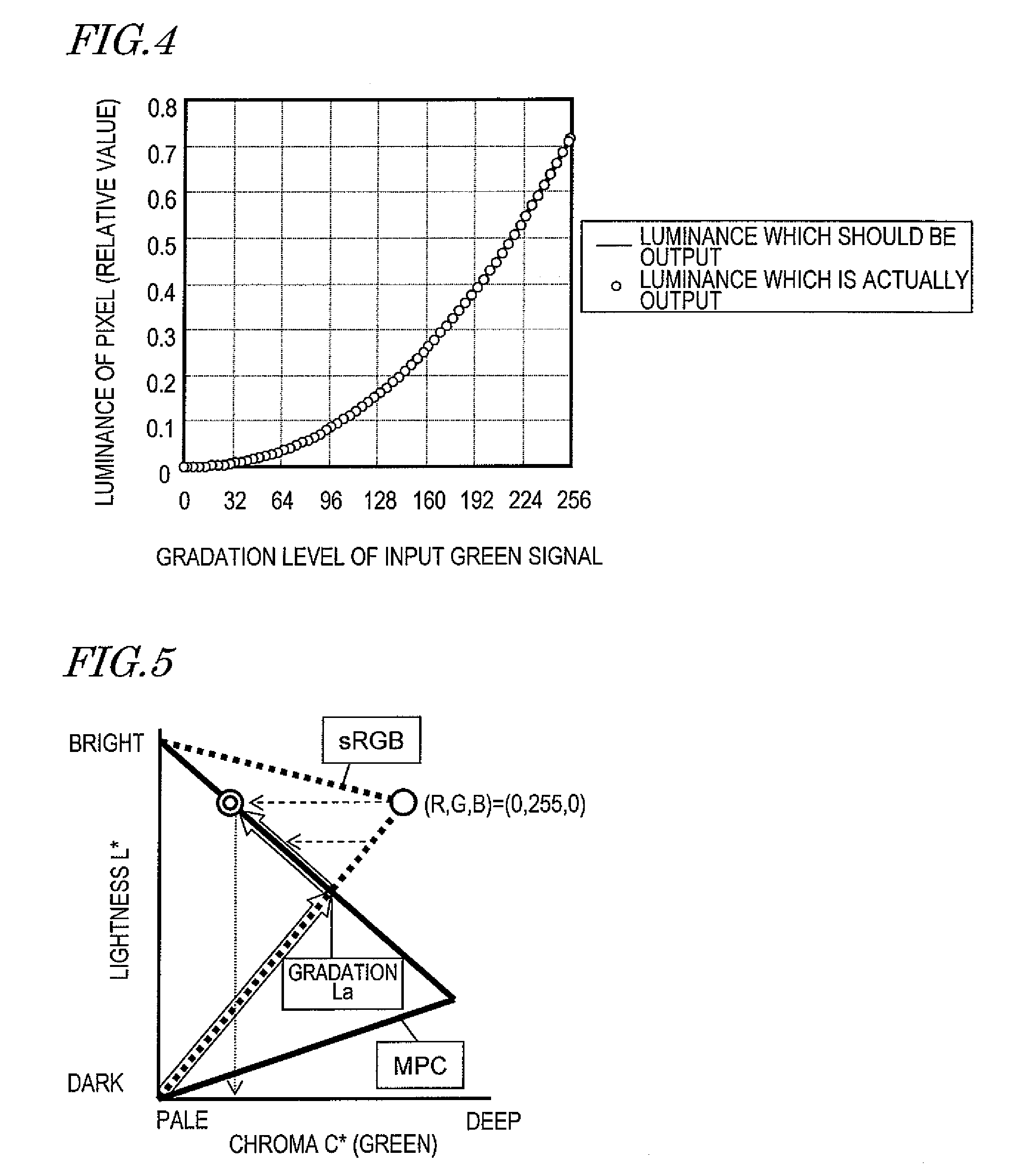Display device
a display device and display technology, applied in the field of display devices, can solve the problem of insufficiently high display quality, and achieve the effect of suppressing the reduction of display quality
- Summary
- Abstract
- Description
- Claims
- Application Information
AI Technical Summary
Benefits of technology
Problems solved by technology
Method used
Image
Examples
example 1
[0079]Table 1 shows the chromaticity values x and y and the luminance ratio of the primary colors respectively represented by the red sub pixel R, the green sub pixel G, the blue sub pixel B, the yellow sub pixel Ye and the cyan sub pixel C in this example. The chromaticity values x and y and the value of the luminance ratio shown in Table 1 are the same also in the following examples.
[0080]
TABLE 1Luminance ratioxyR16.3%0.6790.307Ye41.9%0.4620.522G23.8%0.2350.631C11.4%0.1330.342B6.6%0.1440.053
[0081]FIG. 3 shows the relationship between the gradation level of an input green signal (input gradation level) and the gradation level of each sub pixel (output gradation level) in this example. In the example shown in FIG. 3, when the gradation level of the green signal is in a first range r1 from the minimum level (i.e., zero) to a prescribed intermediate level La, display is provided using the green sub pixel G, the yellow sub pixel Ye and the cyan sub pixel C. By contrast, when the gradat...
example 2
[0093]FIG. 7 shows the relationship between the gradation level of an input green signal (input gradation level) and the gradation level of each sub pixel (output gradation level) in this example. Unlike in the example shown in FIG. 3, in the example shown in FIG. 7, the blue sub pixel is not used for display in the second range r2. Namely, in the example shown in FIG. 7, when the gradation level of the green signal is in the first range r1 and also in the second range r2, display is provided using only the green sub pixel G, the yellow sub pixel Ye and the cyan sub pixel C.
[0094]When the display is provided as in the example shown in FIG. 7 also, the luminance actually output substantially matches the luminance which should be output. Therefore, the lightness of the color displayed by the pixel substantially matches the lightness of green in the sRGB. In the example shown in FIG. 3, in the second range r2, the chroma of the color displayed by the pixel is significantly lower than t...
example 3
[0100]FIG. 9 shows the relationship between the gradation level of an input green signal (input gradation level) and the gradation level of each sub pixel (output gradation level) in this example. In the example shown in FIG. 9, display is provided using the green sub pixel G, the yellow sub pixel Ye and the cyan sub pixel C both in the first range r1 and the second range r2.
[0101]As shown in FIG. 9, the increasing ratios of the gradation levels of the green sub pixel G, the yellow sub pixel Ye and the cyan sub pixel C are different between the first range r1 and the second range r2.
[0102]The output increasing ratio of the green sub pixel G is lower in the second range r2 than in the first range r1, and is more specifically zero in the second range r2. Namely, the gradation level of the green sub pixel G increases as the gradation level of the green signal increases, reaches the maximum level (i.e., 255) at the intermediate level La of the green signal, and stays constant after that...
PUM
 Login to View More
Login to View More Abstract
Description
Claims
Application Information
 Login to View More
Login to View More - R&D
- Intellectual Property
- Life Sciences
- Materials
- Tech Scout
- Unparalleled Data Quality
- Higher Quality Content
- 60% Fewer Hallucinations
Browse by: Latest US Patents, China's latest patents, Technical Efficacy Thesaurus, Application Domain, Technology Topic, Popular Technical Reports.
© 2025 PatSnap. All rights reserved.Legal|Privacy policy|Modern Slavery Act Transparency Statement|Sitemap|About US| Contact US: help@patsnap.com



